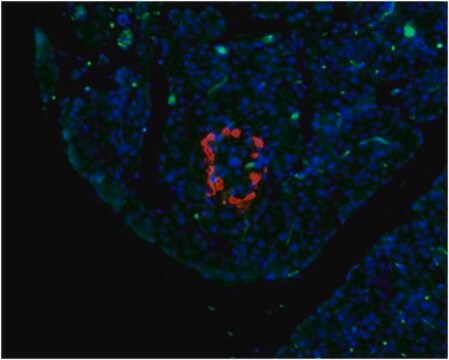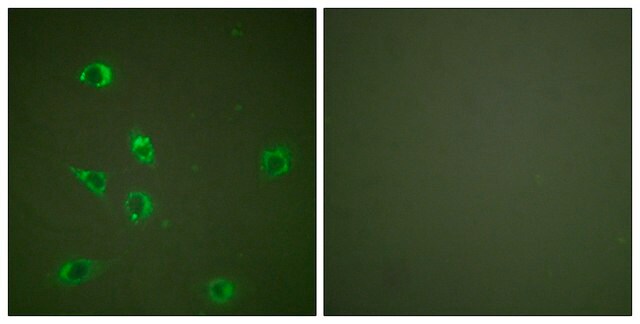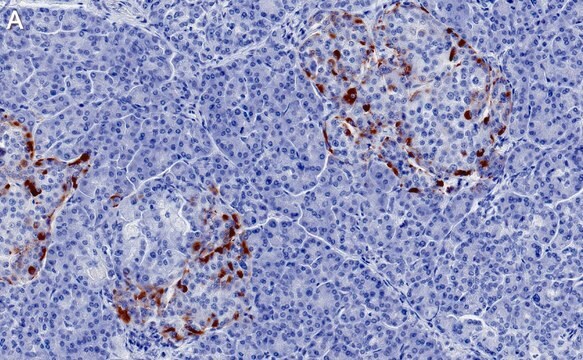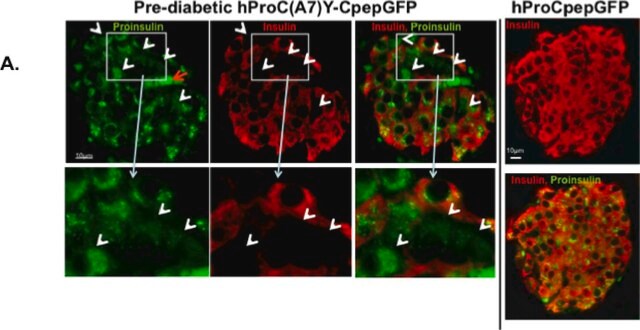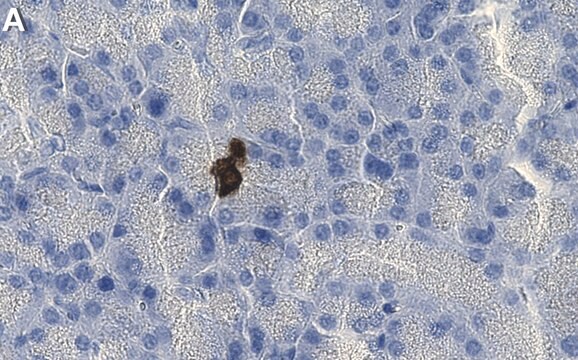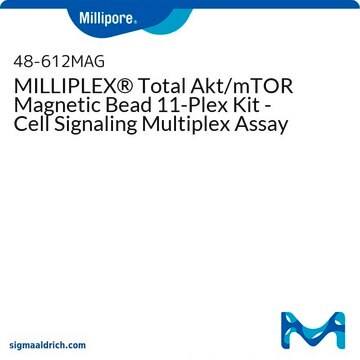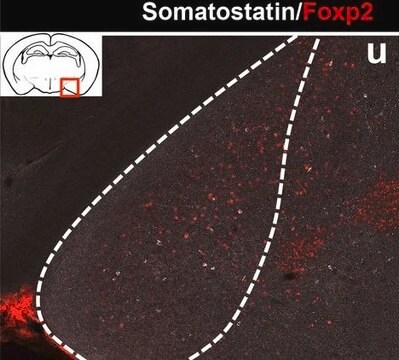SAB4200685
Anti-Glucagon antibody, Mouse monoclonal
clone K79bB10, purified from hybridoma cell culture
Synonim(y):
Monoclonal Anti-Glucagon antibody produced in mouse, GCG, GLP1, GLP2, GRPP
About This Item
Polecane produkty
pochodzenie biologiczne
mouse
Poziom jakości
forma przeciwciała
purified immunoglobulin
rodzaj przeciwciała
primary antibodies
klon
K79bB10, monoclonal
Formularz
buffered aqueous solution
reaktywność gatunkowa
cat, rabbit, mouse, guinea pig, rat, dog, porcine, zebrafish, human
opakowanie
antibody small pack of 25 μL
stężenie
~1 mg/mL
metody
immunohistochemistry: 5-10 μg/mL using heat−retrieved formalin-fixed, paraffin-embedded Rat pancreas sections and Biotin/ExtrAvidin®-Peroxidase staining system.
radioimmunoassay: suitable
izotyp
IgG1
Warunki transportu
dry ice
temp. przechowywania
−20°C
docelowa modyfikacja potranslacyjna
unmodified
informacje o genach
cat ... Gcg(101097825)
dog ... Gcg(403571)
guinea pig ... Gcg(100135526)
human ... GCG(2641)
mouse ... Gcg(14526)
pig ... Gcg(397595)
rabbit ... Gcg(100341777)
rat ... Gcg(24952)
Opis ogólny
Immunogen
Zastosowanie
Działania biochem./fizjol.
Postać fizyczna
Informacje prawne
Oświadczenie o zrzeczeniu się odpowiedzialności
Nie możesz znaleźć właściwego produktu?
Wypróbuj nasz Narzędzie selektora produktów.
Kod klasy składowania
12 - Non Combustible Liquids
Klasa zagrożenia wodnego (WGK)
WGK 1
Temperatura zapłonu (°F)
Not applicable
Temperatura zapłonu (°C)
Not applicable
Wybierz jedną z najnowszych wersji:
Masz już ten produkt?
Dokumenty związane z niedawno zakupionymi produktami zostały zamieszczone w Bibliotece dokumentów.
Nasz zespół naukowców ma doświadczenie we wszystkich obszarach badań, w tym w naukach przyrodniczych, materiałoznawstwie, syntezie chemicznej, chromatografii, analityce i wielu innych dziedzinach.
Skontaktuj się z zespołem ds. pomocy technicznej
